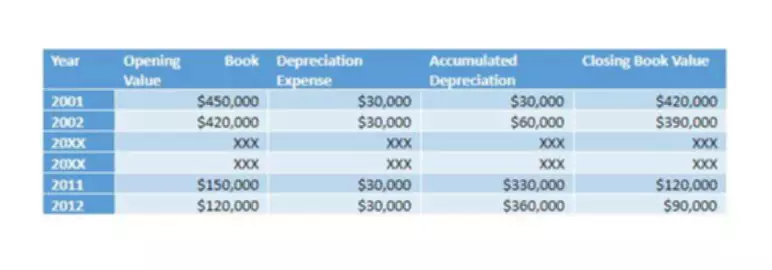State Minimum Wages
Content
- Social Security: When and who collects their retirement and disability payment in November and December
- Characteristics of minimum wage workers, 2020
- Federal Minimum Wage & Labor Law Posters
- Two big December money changes including direct payments up to $914
- Other statistics on the topicMinimum wage in the United States

Exceptions apply to an employee working pursuant to an alternative workweek adopted pursuant to applicable Labor Code sections and for time spent commuting. Rather, a tight labor market and state-by-state minimum wage hikes have combined to push up wage growth for the poorest workers. The sluggishness of overall wage growth is concealing the fact that the labor market has done wonderful things for wages at the low end. Same minimum wage for both tipped and non-tipped employees on state level.
In 2014 and 2015, several cities, including San Francisco, Seattle, Los Angeles, and Washington D.C. Passed ordinances that gradually increase the minimum wage to $15.00 per hour.
Social Security: When and who collects their retirement and disability payment in November and December
In 2003 San Francisco, California and Santa Fe, New Mexico were the first cities to approve consumer price indexing for their minimum wage. Oregon and Florida were the next states to link their minimum wages to the consumer price index. Later in 2006, voters in six states approved statewide increases in the state minimum wage. The amounts of these increases ranged from $1 to $1.70 per hour, and all increases were designed to annually index to inflation. As of 2018, the minimum wage is indexed to inflation in 17 states. Due to the 2021–2022 inflation surge, California seeks to increase the minimum wage from $15.00/hour to $18.00/hour even though California’s unemployment rate is twice the national average. Some smaller government entities, such as counties and cities, observe minimum wages that are higher than the state as a whole.
What is the US minimum wage 2022?
Employers subject to the Fair Labor Standards Act must pay the current Federal minimum wage of $7.25 per hour.
Voters passed Issue 5 in 2018 to schedule a series of wage increases. Effective January 1, 2021, the minimum wage increased to $11.00. If by 1 July 2024, the Minimum Wage Review Commission decides the wage ought to be higher than 10.50, it will decree so.
Characteristics of minimum wage workers, 2020
Overall, 52% of people favored increasing the federal minimum to $15 an hour, but that idea was favored by just 21% of Trump supporters (versus 82% of Clinton backers). And while large majorities of blacks and Hispanics supported a $15 minimum wage in the usa federal minimum wage, 54% of whites opposed it. The Pew Center reported in January 2014 that 73% of Americans supported raising the minimum wage from $7.25 to $10. By party, 53% of Republicans and 90% of Democrats favored this action.
Here are the states raising minimum wage in 2023; 4 top $15 per hour – MassLive.com
Here are the states raising minimum wage in 2023; 4 top $15 per hour.
Posted: Tue, 15 Nov 2022 08:00:00 GMT [source]
“Puerto Rico’s Crisis Illustrates the Risks of Minimum Wage Hikes”. Generally applies to employees who make over $30 in tips per month, unless otherwise noted. For employers with 14 or fewer, $12.20 on January 1, 2022; $12.80 on January 1, 2023; $13.40 on January 1, 2024; https://www.bookstime.com/ $14.00 on January 1, 2025; $14.60 on January 1, 2026; and $15.00 on July 1, 2026. And finally, starting on January 1, 2024, the minimum wage will be indexed to the Employment Cost Index. A high level of public support, specifically Democrats and Republican women.
Federal Minimum Wage & Labor Law Posters
Since then, these rates have been annually adjusted based on the Consumer Price Index . As of July 19, 2022, Emeryville’s minimum wage is $17.68 per hour. Eight states automatically increased their rates based on the cost of living, while eleven states increased their rates due to previously approved legislation or ballot initiatives. Illinois enactedSB 1in February, which will phase in a minimum wage increase to $15 by 2025. The measure also adjusted the youth wage for workers under age 18 (it will gradually increase to $13 by 2025) and created a tax credit program to offset labor cost increases for smaller employers.
- Some American corporations pay their disabled employees subminimum wages as low as $1 per hour, with these laborers rarely moving on to higher-paying jobs.
- The first successful attempts at using minimum wage laws to ameliorate the problem of nonliving wages occurred in the Australian state of Victoria in 1896.
- They found that the higher cost of labor that results from increasing minimum wages gets passed on to consumers in the form of more expensive Big Macs.
There is a continued push to increase the federal minimum wage to $15, but it has been met with significant resistance. There were initially two minimum wages in Emeryville, Calif., when the city established its ordinance on July 2, 2015. These were $12.25 per hour and $14.44 per hour for employees up to 55 years old and those no younger than 56 years old, respectively.
The current federal minimum wage is insufficient to support oneself and, if applicable, a family, particularly in the more expensive cities in the U.S. The federal minimum wage has been stuck at $7.25 for more than a decade, but there have been recent efforts to raise it to $15 per hour. Other states have minimum wages above the federal level, with 26 of those states increasing their wages further in 2022.

Additionally, 67% of economists surveyed believed that a $15 minimum wage would make it harder for small businesses with less than 50 employees to stay in business. The CBO estimated in February 2014 that raising the minimum wage would reduce the number of persons below the poverty income threshold by 900,000 under the $10.10 option versus 300,000 under the $9.00 option. A 2019 study in the Quarterly Journal of Economics on state changes in minimum wage levels between 1979 and 2016 had no impact on the overall number of low-wage jobs. Other economists of different schools of thought argue that a limited increase in the minimum wage does not affect or increases the number of jobs available. Economist David Cooper for instance estimates that a higher minimum wage would support the creation of at least 85,000 new jobs in the United States. This divergence of thought began with empirical work on fast food workers in the 1990s which challenged the neoclassical model. In 1994, economists David Card and Alan Krueger studied employment trends among 410 restaurants in New Jersey and eastern Pennsylvania following New Jersey’s minimum wage hike (from $4.25 to $5.05) in April 1992.
